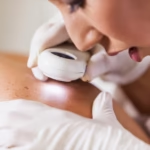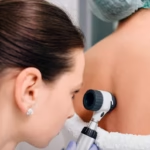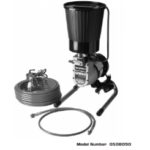Venous ulcers are slow-healing sores that typically develop on the lower leg, often near the ankle. These ulcers are associated with issues in the venous system, where blood has difficulty flowing back up toward the heart, a condition known as venous insufficiency. This can cause pressure to build in the leg veins, leading to skin damage and the formation of an open wound. Care plans for venous ulcers can vary depending on a person’s overall health and the specific characteristics of the ulcer. Here are some different treatment approaches for venous ulcers:
Conservative Treatments
Venous ulcers often fail to heal on their own due to the underlying issue of chronic venous insufficiency. When the veins in the legs are unable to efficiently return blood to the heart, it leads to increased pressure within the veins, known as venous hypertension. This prolonged pressure damages the surrounding tissues, reduces oxygen flow, and impairs the delivery of key nutrients needed for healing.
Persistent pooling of blood in the lower extremities can promote inflammation, slow down the body’s natural repair mechanisms, and increase the risk of infection. Targeted medical interventions address these systemic and local factors, improving stalled healing processes. Initial approaches to managing venous ulcers often involve conservative, non-invasive methods to improve circulation and support the body’s healing process.
Weight Loss
Excess body weight can increase the pressure within the veins of the legs, which may contribute to venous insufficiency. Achieving and maintaining a healthy weight helps reduce the strain on the venous system. For this reason, healthcare providers might recommend weight management as part of a comprehensive care plan.
At-home Care
Compression therapy is a standard element in the management of venous ulcers. This involves wearing specialized elastic stockings or bandages that apply gentle, consistent pressure to the legs. This pressure helps support the veins and can improve blood flow back to the heart. Proper wound care is also fundamental, as keeping the ulcer clean and covered with an appropriate dressing creates a favorable environment for healing and reduces the risk of infection.
Foam Sclerotherapy
Foam sclerotherapy is a procedure that addresses the underlying varicose veins that are causing ulcers. It involves injecting a special foam solution directly into the affected veins, which is designed to close the vein. The body then reroutes blood flow through healthier veins, which can alleviate pressure in the leg over time.
Some common venous ulcer symptoms may include:
- Aching or Heavy Sensations in the Leg
- Swelling in the Lower Leg and Ankle
- Itching or Tingling Sensations
- Foul-smelling Wound Odor
- Changing Skin Color or Texture
Endovenous Laser Therapy
Endovenous laser therapy (EVLT) is another procedure recommended for treating the venous insufficiency that leads to ulcers. During this minimally invasive technique, a thin fiber is inserted into the damaged vein through a small incision. Laser energy is then delivered through the fiber, heating the vein wall and causing it to collapse and seal shut. Similar to foam sclerotherapy, blood is then redirected to other, healthier veins.
Learn More About Venous Ulcers
Managing venous ulcers involves various approaches, from conservative lifestyle adjustments to more advanced clinical procedures. Conservative methods like weight management and compression therapy focus on improving circulation and supporting natural healing, while procedures like foam sclerotherapy and laser therapy target the underlying dysfunctional veins. To determine the most appropriate options for your specific situation, contact a vein specialist for a consultation today.











